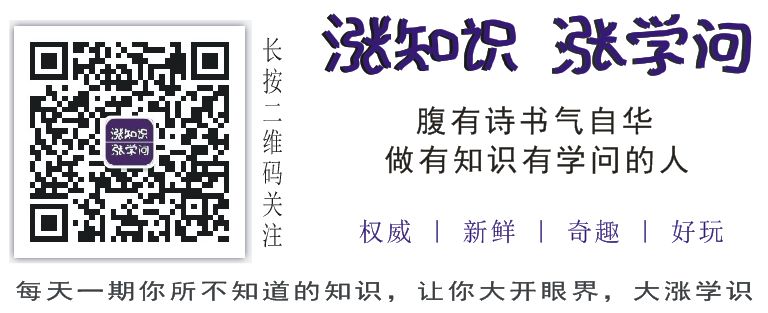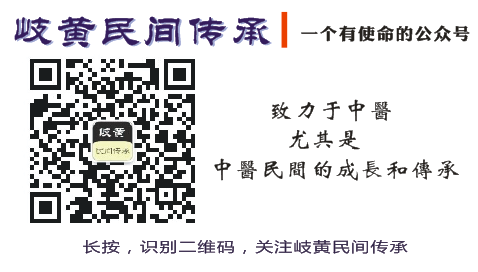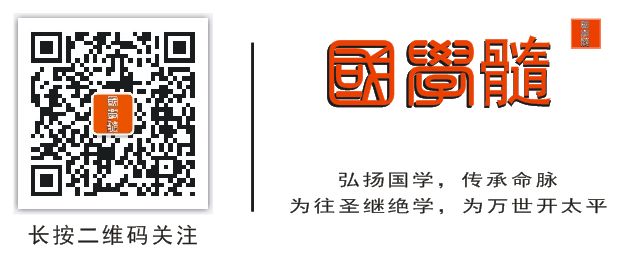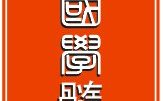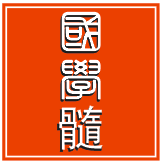
Promoting Traditional Culture, Inheriting the Lifeblood
Continuing the teachings of the sages, opening peace for all generations

The Qi Huang (Yellow Emperor) medicine holds a crucial and significant position in traditional culture, being an inseparable part of it. Throughout the long river of history, it has condensed the wisdom of the Chinese people, contributing significantly over five thousand years, safeguarding the historical process of various eras, resisting and overcoming disasters, allowing the Chinese nation to thrive to this day. In this long historical flow, a wealth of medical civilization has accumulated and settled, becoming a brilliant pearl. We share Qi Huang medicine daily to promote its inheritance and development, better benefiting humanity.

Damp-heat is a common issue many people encounter, leading to conditions such as gastric diseases, eczema, hair loss, prostatitis, vaginitis, cholecystitis, etc. The occurrence of these diseases has a significant reason—excessive damp-heat in the body, with those having a damp-heat constitution accounting for about one-quarter of the general population.
The most common conditions in damp-heat syndrome are Spleen-Stomach Damp-Heat and Liver-Gallbladder Damp-Heat. Due to the similarity in symptoms, many people often cannot distinguish between the two. Traditional Chinese Medicine (TCM) teaches you how to differentiate.
Spleen-Stomach Damp-Heat
Spleen-Stomach Damp-Heat is a disease name, also known as Middle Jiao Damp-Heat. It is often caused by the invasion of damp pathogens or irregular diet, particularly excessive consumption of rich and fatty foods, leading to damp-heat accumulation within the Spleen and Stomach. Symptoms include abdominal fullness, fatigue, loose stools, bitter mouth, little thirst, yellow and scanty urine, and even a yellowish complexion. The tongue coating is yellow and greasy, and the pulse is slippery and rapid. Treatment focuses on clearing heat and draining dampness.
Spleen-Stomach Damp-Heat syndrome is commonly seen in outpatient treatment, involving various diseases across digestive, tumor, and urinary systems, with digestive diseases being the most prevalent, such as chronic gastritis, gastroesophageal reflux disease, gastric or duodenal ulcers, chronic hepatitis B, liver cirrhosis, fatty liver, gallstones, and gallbladder polyps. In surgeries for liver cancer, esophageal, gastric, or intestinal cancers, different stages of development may occur, with chronic gastritis being the most common.
The main causes of Spleen-Stomach Damp-Heat syndrome are the ineffective treatment of the aforementioned diseases, leading to repeated activity and development of the condition. Additionally, it is related to poor lifestyle choices, such as overeating rich and fatty foods, spicy foods, smoking, and drinking, which harm the Spleen and Stomach, causing dampness and heat to accumulate. Therefore, to prevent Spleen-Stomach Damp-Heat, it is essential to actively treat the underlying diseases and change unhealthy lifestyle habits, maintaining a balanced diet, avoiding smoking and drinking.
1. Physiological Characteristics of the Spleen and Stomach: Ascending and Descending
The Spleen and Stomach are the foundation of postnatal life and the source of Qi and blood production. Their functional characteristics mainly focus on ascending and descending. The Spleen governs transportation and transformation, ascending the clear Qi; the Stomach governs receiving and rotting food, descending the turbid Qi. When the Spleen ascends, it is healthy; when the Stomach descends, it is harmonious. If the Spleen does not function well, the clear Qi does not ascend; if the Stomach does not harmonize and descend, the turbid Qi does not descend but instead rises in reverse. The Spleen is a Yin organ, and the Stomach is a Yang organ, mutually interdependent, with one ascending and the other descending, which not only governs the rotting of food and the transformation of essence but also relates to the overall Yin-Yang, Qi and blood, and the rise and fall of water and fire in the body, making it the pivot of the body’s ascending and descending. The rise and fall of the Spleen and Stomach are mutually causal; if the Stomach fails to descend, the Spleen Qi does not ascend; if the Spleen ascends abnormally, the Stomach also does not descend, as stated by Yu Jiayan: “When the Qi of the Middle Jiao is strong, the clear Qi of food rises and nourishes the hundred vessels, while the turbid Qi of food descends to the large and small intestines for elimination.” The Spleen’s clear Yang ascends, and the Stomach’s turbid Yin descends, thus Qi and blood have a source, and the entry and exit are orderly. If there is no transportation and no ascent, there will be no transformation; if there is no descent, there will be no transmission, leading to stagnation and disease.
2. Manifestations of Spleen-Stomach Diseases: Dampness and Stagnation
Although there are many Spleen-Stomach diseases, dampness and Qi stagnation are common pathological mechanisms. The Spleen and Stomach are the officials of storage, the sea of food and water, receiving all substances, and are easily invaded by pathogens, leading to abnormal ascending and descending, Qi stagnation, resulting in water turning into dampness, and food turning into stagnation. Dampness obstruction, food accumulation, phlegm blockage, Qi stagnation, blood stasis, and heat depression arise mutually. The interaction of pathogens and righteousness leads to Qi pathways being blocked, resulting in true stagnation. If the Spleen and Stomach are deficient, transportation fails, and ascending and descending are disordered, then clear and turbid mix, dampness and stagnation can also arise, known as deficiency leading to excess, with excess hidden within deficiency. As stated in the “Suwen: Discussion on Regulation of Menstruation”: “If there is labor and fatigue, the body Qi is weak, and the Qi of food is not abundant, the upper Jiao does not function, and the lower abdomen does not communicate…” Since dampness and stagnation are key pathological mechanisms, treatment of Spleen-Stomach diseases should focus on moving stagnation, draining dampness, and restoring the normal ascending and descending.
3. Treatment of Spleen-Stomach Diseases: Focus on Regulation, with Attention to Lung Qi Dissemination
Spleen-Stomach diseases often involve dampness and stagnation, with Spleen diseases being more damp-prone and easily trapped by dampness; Stomach diseases often involve heat and are easily obstructed by heat, primarily due to improper ascending and descending of Qi. Therefore, Spleen-Stomach diseases should not be treated with excessive tonification or purging but should focus on regulation, exploring the root cause, clarifying the reasons for Qi imbalance, and treating based on the cause, restoring the normal ascending and descending of the Spleen and Stomach, allowing dampness and stagnation to dissipate, and harmonizing the rise and fall, thus alleviating various symptoms.
When regulating the Spleen and Stomach, attention should also be given to disseminating Lung Qi. The Spleen governs the transportation of food and water, transforming food like fermentation, while the Lung governs the distribution of essence like mist. The Spleen requires the assistance of the Lung to complete the distribution of food essence, as stated in the “Suwen: Discussion on Meridians”: “The Spleen governs the distribution of essence, ascending to the Lung, regulating the water pathways, and descending to the bladder.” The Lung governs the dissemination and descending, while the Spleen and Stomach govern the ascending and descending of clear and turbid. Thus, when treating the Spleen, do not forget to manage the Lung; when treating the Lung, one must consider the Spleen. In clinical practice, medications should include those that strengthen the Spleen and harmonize the Stomach, with the addition of those that disseminate the Lung and relieve stagnation, such as Xing Ren (Apricot Kernel), Gua Lou (Trichosanthes Fruit), and Ma Huang (Ephedra). Ye Tianshi used Xing Ren to disseminate Lung Qi and relieve stagnation, allowing dampness to be transported and initiating the pathway for Lung dissemination and Spleen strengthening.
Spleen-Stomach Damp-Heat presents with various symptoms, including gastric pain, burning sensation, dry mouth with little desire to drink, hunger without desire to eat, yellow urine, and constipation, which are key points for diagnosis. Treatment should adhere to the principle of clearing heat without hindering dampness, and draining dampness without promoting heat, using San Ren Tang (Three Nut Decoction) with modifications, often adding Dong Gua Pi (Winter Melon Peel) and Yin Chen (Artemisia) to clear dampness and heat, calming the Spleen and Stomach. For damp-heat diarrhea, Ge Gen Qin Lian Tang (Pueraria, Scutellaria, and Coptis Decoction) is often used with modifications; if jaundice occurs, Yin Chen Wu Ling San (Artemisia and Five-Ingredient Powder) can be used with modifications.
Liver-Gallbladder Damp-Heat
Main symptoms: fullness and oppression in the hypochondrium, bitter mouth, poor appetite, nausea, abdominal distension, irregular bowel movements, short and red urine, red tongue with yellow greasy coating, wiry and slippery pulse, or yellowing of the skin and eyes, alternating chills and fever, or scrotal eczema, or swelling and pain in the testicles, or yellow foul vaginal discharge, or itching of the external genitalia.
Diagnosis: Often due to the invasion of damp-heat pathogens; or excessive consumption of rich and fatty foods leading to damp-heat formation; or abnormal Spleen-Stomach transportation, resulting in internal dampness, which transforms into heat, leading to damp-heat accumulation in the Liver and Gallbladder.
Damp-heat steams and accumulates in the Liver and Gallbladder, leading to abnormal discharge, hence the fullness and oppression in the hypochondrium, red tongue with yellow greasy coating, wiry and slippery pulse; if the Gallbladder Qi overflows, it results in a bitter mouth; if damp-heat obstructs, the Spleen and Stomach’s ascending and descending are disordered, leading to poor appetite, nausea, abdominal distension, and irregular bowel movements; if damp-heat steams the Liver and Gallbladder, bile overflows, causing jaundice, and if the pathogen resides in the Shaoyang, it leads to alternating chills and fever; if damp-heat descends, it causes short and red urine, scrotal eczema, swelling and pain in the testicles, and in women, yellow foul vaginal discharge and itching of the external genitalia.
Treatment: Drain dampness and clear heat, clear the Liver and drain the Gallbladder.
Formulas: For heavy dampness—Yin Chen Wu Ling San; for heavy heat—Long Dan Cao Xie Gan Tang (Gentiana Decoction to Drain the Liver).
Herbs: Huang Qin (Scutellaria), Da Huang (Rhubarb), Zhi Ke (Bitter Orange), Yin Chen (Artemisia), Jin Qian Cao (Lysimachia), Long Dan Cao (Gentiana), Huang Lian (Coptis), etc.
Similarities and Differences Between Spleen-Stomach Damp-Heat and Liver-Gallbladder Damp-Heat
Similarities:
1. Common Etiology: Both Spleen-Stomach Damp-Heat and Liver-Gallbladder Damp-Heat are often caused by the invasion of damp-heat pathogens or the preference for rich and fatty foods, leading to dampness and heat formation.
2. Both present with symptoms of poor appetite, nausea, and abdominal distension.
3. Both may exhibit jaundice, which is caused by damp-heat steaming, leading to bile overflowing and affecting the skin.
4. Tongue coating in both cases shows a red tongue with yellow greasy coating, indicating damp-heat.
Differences can be identified in the following aspects:
Differences:
1. Focus of Damp-Heat: Spleen-Stomach Damp-Heat emphasizes dampness, with symptoms such as heaviness in the limbs, poor appetite, abdominal distension, and loose stools being prominent, while heat symptoms are relatively mild; Liver-Gallbladder Damp-Heat emphasizes heat, with symptoms such as fever, dry mouth, bitter taste, and constipation being prominent, while dampness symptoms are relatively mild.
2. Liver-Gallbladder Damp-Heat also has symptoms of damp-heat descending: such as scrotal eczema, swelling and pain in the testicles, or yellow foul vaginal discharge, which are not present in Spleen-Stomach Damp-Heat.
3. Liver-Gallbladder Damp-Heat also includes symptoms of fullness and pain in the hypochondrium: due to damp-heat stagnation in the Liver and Gallbladder, leading to Qi stagnation and pain, while Spleen-Stomach Damp-Heat presents with fullness and pain in the epigastric region without hypochondrial pain.
4. Symptoms of Spleen-Stomach Damp-Heat are more pronounced: Both conditions exhibit symptoms of Spleen-Stomach dysfunction, but Liver-Gallbladder Damp-Heat is due to Liver Qi stagnation affecting the Stomach, leading to milder Spleen-Stomach symptoms, while Spleen-Stomach Damp-Heat is due to damp-heat accumulation in the Spleen and Stomach, leading to more pronounced symptoms.
5. Treatment Focus: Treatment for Liver-Gallbladder Damp-Heat focuses on clearing and draining damp-heat from the Liver and Gallbladder, promoting diuresis and reducing jaundice, using herbs like Long Dan Cao, Chai Hu (Bupleurum), and Yin Chen. The treatment course is short but prone to recurrence; treatment for Spleen-Stomach Damp-Heat focuses on clearing heat and transforming dampness, regulating Qi and harmonizing the center, strengthening the Spleen and eliminating dampness, using herbs like Huang Lian, Zhi Zi (Gardenia), Yi Yi Ren (Coix), and Chen Pi (Tangerine Peel). The treatment course is longer but has a lower recurrence rate.Follow the Guoxue Sui public account for more content.
| I Copyright Statement:○Content sourced and compiled from the internet.○ Copyright belongs to the relevant rights holders. If there are any improper uses, please contact us for immediate removal.I Submission Email:[email protected]I Warning:All articles published on this platform are for the purpose of popularizing TCM knowledge and are for reference and learning by professional TCM practitioners only. They do not constitute any prescriptions, recommendations, or guidance. Please do not blindly try medications; this platform does not bear any responsibility for any consequences arising from this. If needed, please use under the guidance of a physician. All articles published on this platform represent the author’s views. |
Recommended Reading【Guoxue Sui】Selected excellent articles from the public account:① Traditional Chinese Painting: Teaching You to Paint Impressionistic “Cockscomb Flower and Beetle”② From Reproductive Love to Immortal Love, the Mysteries of Bedroom Techniques—Exploring the Meaning of “Fengshen Yanyi” (Part 2)③ Blessing Techniques: The Secret of Soul Retrieval【Knowledge and Learning】Selected excellent articles from the public account:① The Qin Dynasty had the “Four Great Legions” to unify China; what was the final destination of the legion that swept through the six directions?② This woman had “the talent of Lü Bu but lacked Lü Bu’s evil”, ruling from behind the curtain, her life was quite legendary.③ Chiang Kai-shek’s slap created an image of a “just judge” who hated evil, but why did he not dare to strike? 【Qi Huang Folk Inheritance】Selected excellent articles from the public account:① The miraculous folk method of moving sores, transferring malignant tumors from important areas to less critical areas—clinical applications of the method of moving sores.② Difficulty falling asleep, excessive dreaming, shallow sleep, early waking, frequent waking, and insomnia—Professor Xu Hao’s experience in diagnosing and treating insomnia.③ The Lin family has over a hundred years of experience in treating bones: Lin Rugaos’ treatment of fractures in 188 cases with bone-repairing pills.④ Irregular sexual life leading to premature ejaculation—Professor Li Yaqing’s clinical experience in treating male diseases combined with anxiety and depression.⑤ Introduction of an ancient secret formula—Da Cheng Dan Fang.⑥ Phlegm-dissolving and mass-dissolving formulas for treating gastric cancer, intestinal cancer, esophageal cancer, and other digestive tract tumors and other malignant tumors.⑦ Self-formulated Zhen Xiong Tang for treating impotence in 76 cases, harmonizing Yin and Yang, addressing both deficiency and excess, and achieving a wonderful remedy.⑧ Yi Jing Zhuan Zhuang Tang for treating infertility, impotence, premature ejaculation, lumbar and knee soreness, fatigue, and weakness—Professor Wang Jinsong’s clinical insights.For more exciting and excellent content, please check the historical articles.